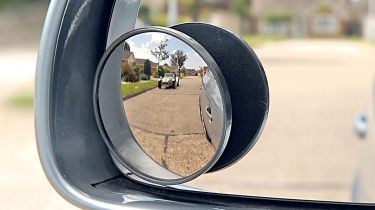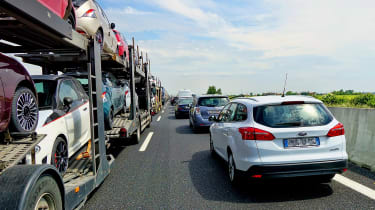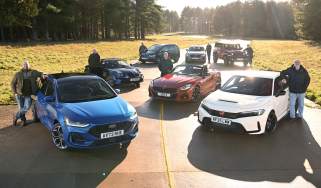What is a blind spot when driving?
There’s plenty of tech in modern cars to help us cope with blind spots but what are they and how can you keep yourself safe with or without the driver aids?
Rear view and side mirrors usually give a good view around the car when we’re driving but towards the rear of the vehicle there’s often an area that’s not visible in the mirrors. The area you can’t see is called the blind spot.
The size of the blind spot will vary from car to car and driving position to driving position but in many cases if you look over your shoulder there might be a car there that you were unable to see in your mirrors. This means that relying solely on the mirrors could cause an accident and that checking the blind spot before changing lanes, joining from a slip road or pulling out of some junctions is an essential safety procedure.
Avoid being in someone else's blind spot
Large vehicles like HGVs have bigger blind spots than passenger cars and often have signs on the back highlighting this: ‘If you can’t see my mirrors, I can’t see you’, is a common message on the rear of trucks. To avoid being in the blind spot of a larger vehicle, always make sure you can see their mirrors and check there’s enough room before overtaking so you don’t get stuck driving next to the vehicle in their blind spot.
The same thing applies to a lesser extent with cars. If you pull out to overtake a car on a motorway or dual carriageway, try to complete the manoeuvre quickly and move back out of the overtaking lane. Try to avoid driving along in another car’s blind spot for extended periods of time to make yourself less vulnerable if other drivers fail to check their blind spots or forget that you’re there.
Remember that some vehicles have worse visibility than others with vans, rear-engined sports cars and vehicles towing trailers often affording their drivers only a limited view to the rear. It’s not just HGV drivers who might struggle to see you and you should exercise caution, doing everything sensible to keep yourself safe on the road.
Check your blind spot
Blind spots can be a serious safety risk on the road if you fail to check over your shoulder properly before pulling out or making lane changes. You should also make sure that your mirrors are adjusted correctly to minimise the size of any blind spots around your car.
Of course, there's new technology to reduce the risk of collisions by monitoring the blind spot on modern cars. Blind spot monitoring systems use cameras and radar sensors on the rear bumper to detect if there’s a vehicle driving in your blind spot.
The systems vary from model to model but typically an orange light will appear in the side mirror when there’s another vehicle in your blind spot. If you indicate or attempt to change lanes while the light is illuminated, the light will start to flash and some systems will use an audible warning or steering wheel vibration to alert the driver of danger. If the car is equipped with a lane-keeping assist system (LKAS) this can make steering corrections to keep you in your lane if someone is in your blind spot.
Ford has gone further with its Blind Spot Information System (BLIS) which can extend the area it monitors to include the blind spot of a trailer. New Ford pick-up trucks and SUVs enable drivers to input the exact size of their trailer so the radar sensors on the rear bumper will cover the extended area behind the car.
Do you have any tips about blind spots? Let us know in the comments below...
Find a car with the experts





